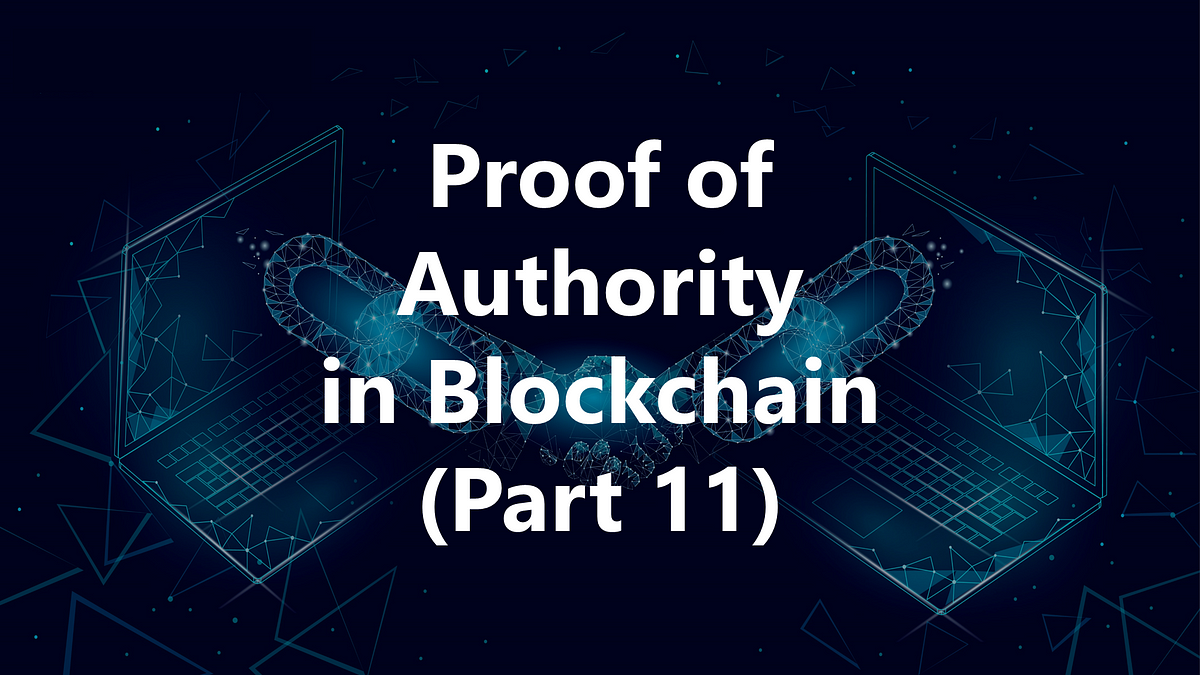Blockchain Security 101: Unraveling The Mysteries Of Proof Of Authority
Blockchain Security 101: Unraveling the Mysteries of Proof of Authority

- Unlock The Secret To Effortless Earnings: A Beginner’s Guide To Crypto Staking And Yield Farming
- The Future Of Defi Insurance And Risk Management
- Breaking Free From Centralized Control: The Power Of Non-Custodial Wallets
- The Rise Of Blockchain In Supply Chain Management
- Streamlining Business Operations With Smart Contracts: A Step-by-Step Guide
In the complex and ever-evolving landscape of blockchain technology, security is an aspect that can’t be compromised. While most of us have heard of the popular consensus algorithms like Proof of Work (PoW) and Proof of Stake (PoS), there’s another crucial player that’s often overlooked – Proof of Authority (PoA). In this article, we’ll delve into the world of PoA, exploring its inner workings, benefits, and limitations.
What is Proof of Authority?
To understand PoA, let’s first talk about the concept of consensus algorithms. In a blockchain network, consensus algorithms are the mechanisms that enable the nodes to agree on the state of the ledger. PoA is a type of consensus algorithm that relies on the identity and reputation of the validators, rather than their computational power or stake.
In a PoA-based system, validators are chosen by the network’s administrators or governance bodies. These validators are then responsible for creating and validating new blocks. The key idea behind PoA is to create a more secure and efficient network by limiting the number of validators and relying on their reputation and identity.
How Does Proof of Authority Work?
The process of creating and validating blocks in a PoA network is relatively straightforward:
- Validator selection: The network’s administrators select a group of validators based on their reputation, identity, and trustworthiness.
- Block creation: A validator creates a new block and adds it to the blockchain.
- Block validation: The other validators in the network verify the new block and ensure that it meets the network’s rules and regulations.
- Block confirmation: Once the block is verified, it’s added to the blockchain, and the network updates its state.
Benefits of Proof of Authority
So, why is PoA gaining traction in the blockchain world? Here are some of its benefits:
- Faster transaction times: PoA allows for faster transaction processing times, making it an attractive option for applications that require high throughput.
- Lower energy consumption: Unlike PoW, PoA doesn’t require massive amounts of computational power, making it a more energy-efficient option.
- Improved security: By relying on the reputation and identity of the validators, PoA reduces the risk of 51% attacks and other malicious activities.
Limitations of Proof of Authority
While PoA offers several benefits, it’s not without its limitations:
- Centralization: PoA can be more centralized than other consensus algorithms, as the network’s administrators control the selection of validators.
- Trust and reputation: PoA relies heavily on the trust and reputation of the validators. If a validator is compromised or acts maliciously, the entire network can be compromised.
- Scalability: PoA can struggle with scalability, as the number of validators can be limited by the network’s administrators.
Real-World Applications of Proof of Authority
PoA is being used in various blockchain applications, including:
